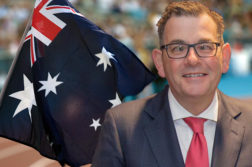The Government is using the report of the Owen Inquiry into Electricity Supply in NSW to support its plan. But in the timeless tradition of such inquiries, the Owen Report merely told the Government what it wanted to hear.
Let’s backtrack a little. In 2006, the National Electricity Market Management Company (NEMMCO) indicated that NSW would, in years to come, need access to more electricity at peak times. This was no surprise: no big new power stations have been built in NSW since the 1970s, despite increases in population and energy use.
There are three possible ways to respond to this problem. The State could build new power stations to increase supply. It could source more of its power from interstate through the national grid. Or it could encourage greater energy efficiency, so that less electricity needs to be generated in the first place.
The problem is that the terms of reference for the Owen Inquiry refer specifically to "the need and timing for new baseload generation". While the Report does discuss how much extra electricity NSW could get from interstate (not much, it concludes), it doesn’t seriously consider how stronger energy efficiency incentives might defer the need for a new power station in NSW until the demand could be met by emerging renewable energy technology.
Even if more electricity is needed, this doesn’t mean a new baseload power station is needed. The Owen Report acknowledges, on its very first page, that the extra demand in NSW is for peak – rather than baseload – power, mostly on hot summer afternoons and evenings.
In its submission to the Owen Inquiry, NEMMCO pointed out that "it may be uneconomic to meet this additional capacity requirement using baseload plant." Building an expensive new baseload plant, which would run 24/7 using coal or gas, to service the additional demand would be like driving a Hummer down to the corner shop for a litre of milk.
NEMMCO instead proposed using a peaking or intermediate plant to meet demand on hot summer days. It also suggested paying end-users to reduce their demand at peak times. These are not the words of a bunch of greenies or alternative energy geeks, but of the company responsible for running the $7 billion national electricity market.
By directing the Owen Inquiry to focus on the most expensive option, the NSW Government made sure it had the ammunition it needed to justify selling off public assets to the highest bidder.
Without the need for a new baseload plant, there is no need to privatise the electricity industry. With two new gas-fired peaking plants currently under construction by the private sector and the world’s largest wind farm likely to be built shortly near Broken Hill, the argument that the industry needs to be sold off to encourage new investment falls over.
The baseload issue exposes a more fundamental problem with the Owen Report and the Government’s plan. Each assumes a ‘business as usual’ future – when the real issue for the NSW electricity industry is how to restructure to face the challenge of a carbon-constrained world, and how to engage and protect consumers in this inevitably long, complex and costly process.
How can low-income households be protected as prices inevitably rise? How can consumers be educated to respond better to price and consumption signals from retailers? How can we best encourage the shift from coal and gas to renewable energy? How can electricity companies be transformed so that they make money by encouraging consumers to save, rather than consume, energy?
Seeking answers to these questions is what the NSW Government should be prioritising; not privatisation.
Donate To New Matilda
New Matilda is a small, independent media outlet. We survive through reader contributions, and never losing a lawsuit. If you got something from this article, giving something back helps us to continue speaking truth to power. Every little bit counts.



